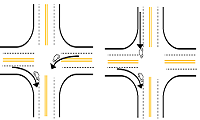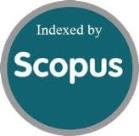Vision Technology Based Traffic Safety Analysis Using Signal Data
Keywords:
traffic safety, image processing, vision technology, vehicle detecting, safety evaluationAbstract
Recent vision technology allows traffic engineers to analyze traffic safety based on image processing applications. Vehicle trajectory data including vehicle position and speed are extracted and converted into traffic conflicts related variables. These variables are analyzed to find correlations with crash data and geometric design variables and included in the statistical analysis process to evaluate the safety of intersections. In this paper, signal timing information data is included in the analysis process to investigate if there are any correlations with traffic conflict data. For example, traffic conflicts happen more frequently in a certain movement at certain signal time phase. The goal of this paper is to develop a method for vision technology-based traffic safety analysis process using traffic signal data to identify crash prone movement and signal to time at a given intersection. The proposed technique is demonstrated in real-world video data collected in an intersection. This paper is expected to provide more insight and technique in traffic safety evaluation.

Published
How to Cite
Issue
Section
License
Submission of a manuscript implies: that the work described has not been published before that it is not under consideration for publication elsewhere; that if and when the manuscript is accepted for publication. Authors can retain copyright of their article with no restrictions. Also, author can post the final, peer-reviewed manuscript version (postprint) to any repository or website.

Since Oct. 01, 2015, PETI will publish new articles with Creative Commons Attribution Non-Commercial License, under The Creative Commons Attribution Non-Commercial 4.0 International (CC BY-NC 4.0) License.
The Creative Commons Attribution Non-Commercial (CC-BY-NC) License permits use, distribution and reproduction in any medium, provided the original work is properly cited and is not used for commercial purposes



